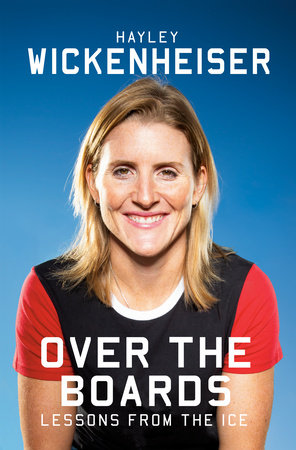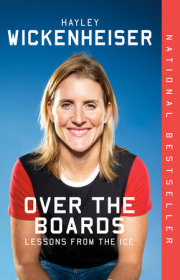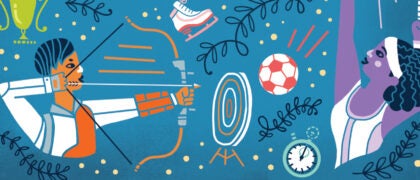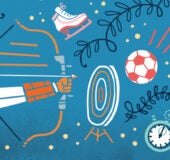This book was born from that day in the ER. In the panic that overwhelmed me when the call came in, I realized that I’d been there before. Not in a life or death situation, but in a high-pressure one. And I knew how to handle pressure. I’d been training for it for more than two decades.
Obviously, treating a teenaged overdose victim has higher stakes than an Olympic final. When you have a human life in your hands, the decisions you make are crucial. It’s a very different type and degree of pressure. But the strategies I’d honed on the ice—focus, teamwork, leadership—were just as useful in the ER.
The game of hockey has given me a lot—more than I ever gave it. It provided me a beautiful son, a purpose, a satisfying career, and lifelong friends. But more than that, my time in hockey prepared me for everything that came next, with key lessons and strategies that I use outside the parameters of the game clock. That’s what these pages contain: the lessons I have learned throughout my career. When I realized that the skills I had learned in hockey were transferable to my career in medicine, I got to thinking that they could be useful for other people as well.
I’ve been super lucky. Early in my life, I found something that I loved to do, and I was able to earn a living doing it. Being passionate about my work has been key to my success. It gave me inspiration each day, allowing me to keep working hard, to continue pushing my game, my speed, my shot, my fitness level. It was never about the salary or even medals. I loved the training every bit as much as I did the games. I was happiest when I was sweating through a bike ride or doing sprints in the pool. I loved the pain, the burning sensation in the pit of my lungs.
Looking back, I realize I was able to achieve all that I have by applying hard work and passion to everything that I did. That’s what I really want to convey with this book. You don’t have to be born with innate talent or skill—that will only take you so far. What you need to achieve your own best, the passion and perseverance, is already inside you.
There was one other reason I wanted to put pen to paper. Being female in male-dominated fields like hockey and medicine isn’t easy. I want anyone who has been judged as less capable because of their gender to know that I’ve waded through the same bullshit as them. If my words make things a little bit easier for them or help them see that if I can do it, they can, too, it will have been worth it. We all need a little inspiration from time to time.
A lot of these lessons I learned the hard way. Take advantage of my mistakes, please! Learn from them so you can go out and make new ones. This book isn’t just for athletes or medical professionals. We’re all juggling multiple roles. We get swept up by heady expectations. We feel weighed down by our packed schedules. These lessons helped me get where I am and get through
the challenges I’ve faced. I hope you can use them to help you achieve your own dreams.
Old habits die hard (which is why you have to build good ones—you’ll get to that chapter), and it made the most sense to me to organize these lessons into three zones, like the game of hockey. You won’t get far without a solid foundation and trusted systems, which is what the defensive zone covers; the neutral zone leans more towards learning to get comfortable being uncomfortable; and the offensive zone is where you capitalize, where you let fly and score. That’s how I think about the lessons and my life, anyway. This book covers everything from when I was trying to claw my way to the top to the day I hung up my skates. A few lessons I learned off the ice have snuck in as well.
What you’re not going to find in these pages are tired clichés about following your dreams. I’m a very practical person, and I like tangible ideas that can be executed. A lot of people beat around the bush. I’m a straight shooter. I don’t sugar-coat things. I think it’s important to be direct and say what you mean.
And for better or for worse, I always have.
Copyright © 2021 by Hayley Wickenheiser. All rights reserved. No part of this excerpt may be reproduced or reprinted without permission in writing from the publisher.








